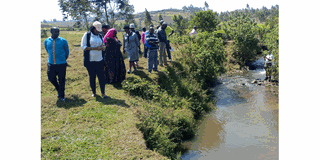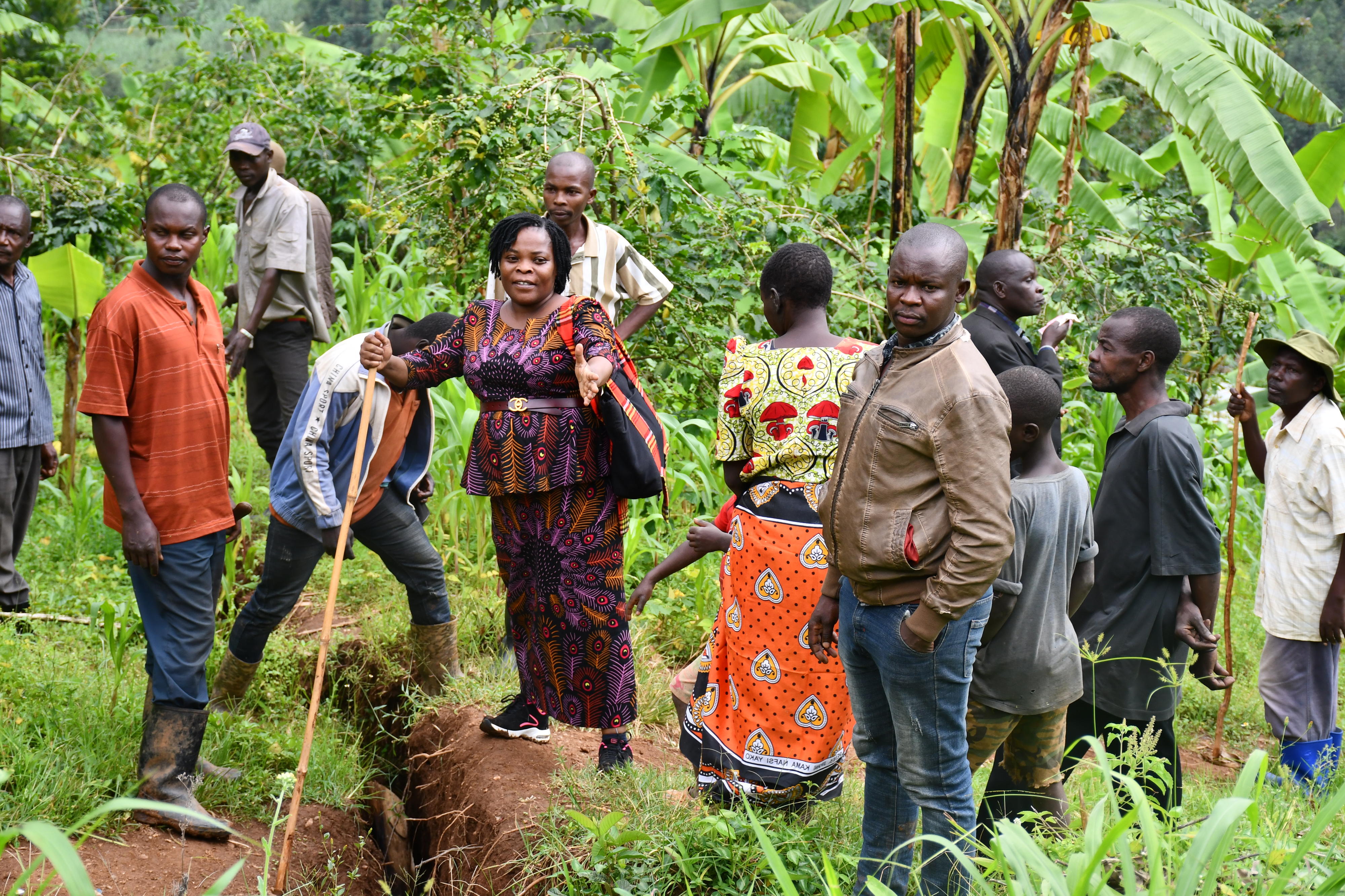NWSC commits to secure water supply source

NWSC and Bushenyi District leaders during a tour of River Warugo, where the Shs11b water project will be constructed in October. PHOTO/ZADOCK AMANYISA
What you need to know:
NWSC will also implement a flood management plan in case the River Warugo bursts its banks.
Leaders in Bushenyi District have asked the National Water and Sewerage Corporation (NWSC) to protect the proposed River Warugo water source in Bushenyi District against contamination.
Located in Kakanju and Kyamuhunga sub-counties, River Warugo is a water source for a multimillion project, the Bushenyi Water Supply and Augmentation Project (Warugo Project).
The Shs11 billion initiative will serve a population of about 100 people in the four sub-counties of Kakanju, Ruhumuro, Bitooma and Kyamuhunga with piped water. It will also supply Ruharo tank in Bushenyi Town.
Works are scheduled to commence in October and the treatment plant at Nyakabingo in Kakanju shall have a production capacity of 2.5 million litres of clean water per day. It is expected to remain efficient for at least 20 years, according to NWSC.
Speaking to Monitor after a series of stakeholder engagement meetings, Ms Victoria Komukyeya, the principal sociologist at NWSC, last week said the water agency plans to mitigate any possible environment and water pollution threats.
Ms Komukyeya’s remarks came after the Bushenyi District chairperson, Mr Jafari Basajabalaba, raised concern over agricultural chemicals that pollute the water source, adding that this would make treatment expensive.
“We have to put into consideration the pollution of this water source by herbicides and fertilisers from surrounding tea gardens. We need to make sure that this source is protected,” Mr Basajabalaba said.
In response, Ms Komukyeya said they plan to carry out an environmental impact assessment to mitigate social and environmental risks.
She said: “There is going to be a study by environmental experts on the methodology that we are going to use at the source. Once the studies are done, then resource protection will start. There are pesticide management plans that are put in place and these plans are embedded in the EIA plan.”
It remains unclear why carrying out the EIA has delayed, with execution of project just two months away.
Ms Komukyeya said NWSC will also implement a flood management plan in case the river bursts its banks.
The area manager, Mr Sam Kiggundu, said a source protection plan is already in place.
“We don’t want to deplete that source because when you continue with these human activities which use fertilisers, chemicals get into water. But the project management team will come and start sensitising the masses about catchment protection so that people can go some meters away from the source so as to conserve it because once the source is depleted, the project will pump nothing,” he said.





